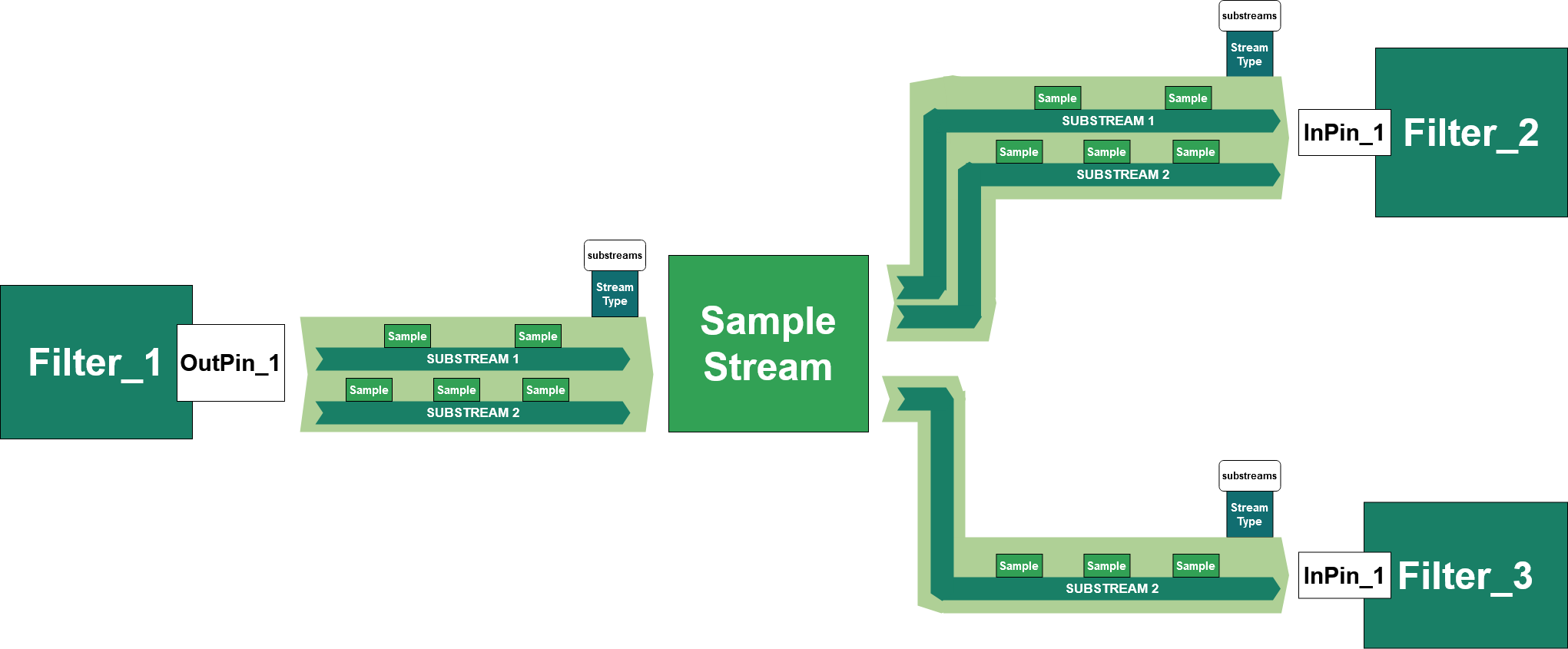
Substreams have been introduced in ADTF 3.7.0 to address handling of large amounts of different signals or complex data structures by multiplexing them on single output pin/sample stream. This includes two new concepts:
Using substreams is one possibility to reduce pin and connection appearance within the Data Pipe of the Filter Graph.

|
Substreams are defined by using a special stream type with the "adtf/substreams" stream meta type (stream_meta_type_substreams) This stream type stores the following information for each substream:
See cSubStreamTypes for information on how to create such a substream stream type.
Each sample transmitted via such a sample stream is then assigned the id of the substream that it belongs to, see SetSubStreamId and set_sample_substream_id().
To select samples of a specific substreams for processing in other ADTF filters we provide a special sample stream implementation (Substream Selector), that will select and forward only the stream types and samples of a single substream.
You can use the Substream Dissector to dissect a "normal" sample stream into substreams containing all individual elements.
We provide the following programming examples on how to use substreams:
In order to handle dynamic processing of substreams we introduced the substream request handling architecture. This mechanism enables consumers the inform sources about the data that they are interested in. So by default all substream sources will not provide any data if no one requests anything.
The new IStreamingRequests interface is forwarded transparently via sample streams. Via this interface a consumer can tell a source which substream samples it likes to recieve. For convenience access to this interface is provided via the default sample reader implementation (RequestSamples). To provide request support for substreams you can use the requestable_writer template, but most of the time just use the adtf::filter::hollow::cGraphObject::CreateRequestableOutputPin method.
We provide the following programming examples on how to provide request support for substreams: